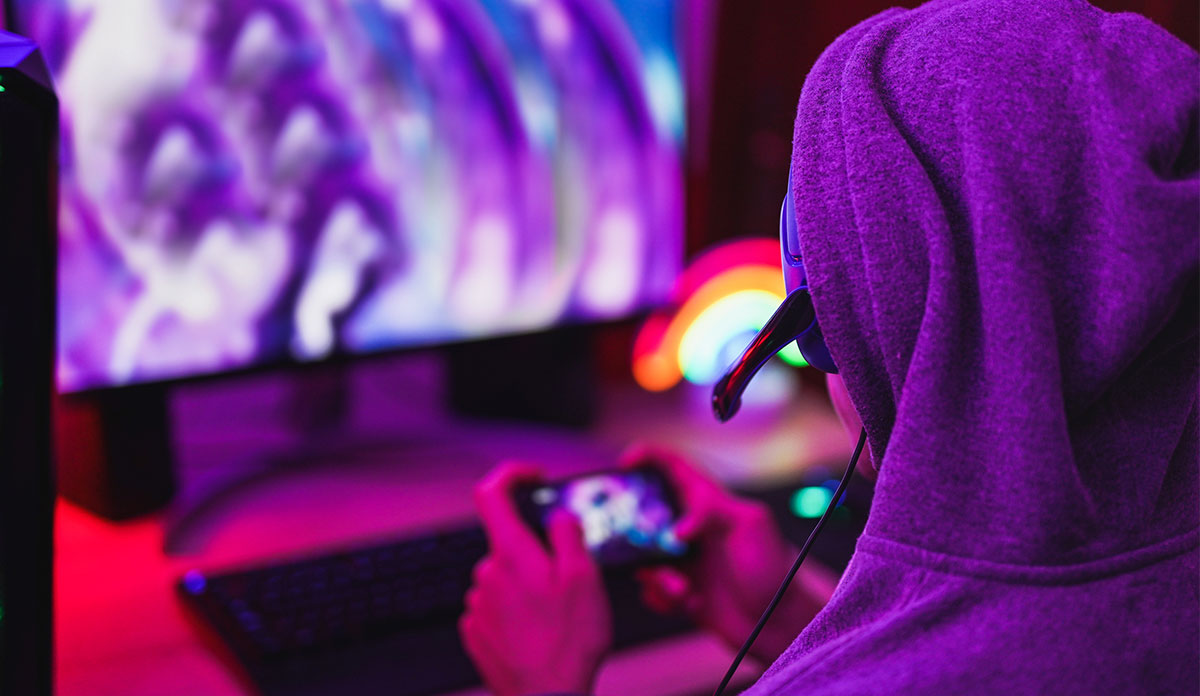Adolescent recreational screen time doubled to nearly eight hours per day at the start of the COVID-19 pandemic. The most common screen modalities were watching or streaming movies, videos, and television, and playing video games. These estimates come from a study my colleagues and I recently published in JAMA Pediatrics.
We found notable disparities in screen use by sociodemographic characteristics. Boys had more total screen time than girls, which was largely driven by playing video games. On average, Black adolescents reported 10.1 hours per day, Native American adolescents reported 9.7 hours per day, Latinx adolescents 8.7 hours per day, White adolescents 7 hours per day, and Asian adolescents 6.6 hours per day. Adolescents from lower income households reported more screen time than those from higher income households. These disparities in screen use may reflect neighborhood environments, access to financial resources, and digital media education.
These findings come from a cross-sectional analysis of data from the Adolescent Brain Cognitive Development (ABCD) Study, the largest long-term study of brain development and child health in the United States. In 2016 the ABCD Study started following nearly 12,000 early adolescents annually. We focused on teens who were 12 and 13 year-olds in May 2020. The disparities we found during COVID are similar to patterns we found in 9 and 10 year-olds before the pandemic. But overall screen exposure was higher in 2020.
Screen time has been linked to several adverse physical and mental health outcomes in children and teens. For instance, we previously reported that binge-watching television can lead to binge-eating disorder. Children are exposed to food advertisements and may snack or eat when distracted in front of screens, even when they are not hungry. Higher screen use is also linked to weight gain in children.
We found that overall greater screen time was associated with poorer mental health, greater stress, less social support, and worse coping behaviors during the pandemic.
Digital technology can have benefits when used to promote education and socialization, especially when in-person options are not possible. Yet, despite these possible benefits, we found that overall greater screen time was associated with poorer mental health, greater stress, less social support, and worse coping behaviors during the pandemic. These potential links to mental health are particularly salient given the current youth mental health crisis.
With the release of the Wall Street Journal’s exposé, The Facebook Files and documentaries such as The Social Dilemma, public discourse about the potential impacts of screen use on adolescent health is growing. This has led to congressional hearings and discussions of additional policy to provide regulations and safeguards, especially for teens, such as more robust parental controls and age verification.
Future research should continue to monitor screen-use patterns among adolescents during the pandemic. Studies on potential health impacts of screen exposure can delve into nuances such as content and context of screen use. The American Academy of Pediatrics previously recommended limiting adolescent recreational screen time to under two hours per day; however, given the current ubiquity of screens they now advocate for a more personalized Family Media Use Plan, encouraging families to set their own screen rules. Given that adolescents from lower socioeconomic backgrounds are more likely to have higher screen use, specific guidance and examples can be tailored for those with fewer resources. Parents underestimated their adolescents’ social media and video game use during the pandemic. This indicates that social media and other digital technology companies need to develop more robust age verification and parental controls that allow parents to monitor and limit excess screen use. Schools can provide digital literacy education to help teens navigate and use digital technology to maximize benefits and minimize potential harms.
Photo via Getty Images














